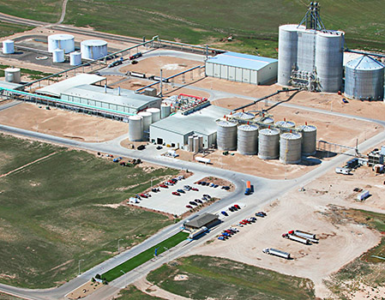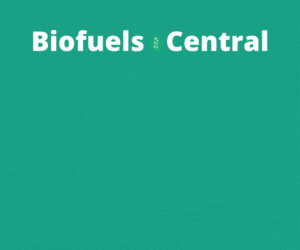Indonesia bets on biofuels over oil, but EVs could render both moot, Mongabay.
[Mongabay] The rapid development of electric vehicles looks set to overtake the biofuel infrastructure that Indonesia is investing heavily in, and could render the country’s alternative-fuel model redundant, new projections show.In a report, Indonesian policy think tank the Institute for Essential Services Reform (IESR) says that under a business-as-usual scenario, demand for biofuel in Indonesia will increase to 190 million metric tons by 2050. But if the EV market share increases, biofuel demand could end up being 93 million metric tons by 2050.
The government is pushing for the development of EVs in the country, with the Indonesian Chambers Of Commerce and Industry (KADIN) predicting the country could become the world’s largest producer of lithium batteries and EVs thanks to its abundant reserves of nickel, a key component in EV development.
🔥 What about we co-host a webinar? Let's educate, captivate, and convert the biofuels economy!
Biofuels Central is the global go-to online magazine for the biofuel market, we can help you host impactful webinars that become a global reference on your topic and are an evergreen source of leads. Click here to request more details
“There’s a possibility that demand for liquid fuel won’t increase significantly and it won’t be far off from the existing oil refinery capacity,” IESR researcher Julius Christian Adiatma said at the online launch of the report.
That leaves the future potential demand for biofuel, which in Indonesia is derived from palm oil, highly uncertain, the report says.
Yet despite this uncertainty and its own push for EVs, the government is also aggressively promoting domestic biofuel production, including the most ambitious fossil-fuel-to-biofuel transition program in the world. The program calls for blending palm-based biofuel with diesel in increasingly larger proportions, eventually reaching a point where all the diesel sold at the pump is biodiesel.
The aim is to both ease Indonesia’s dependence on crude oil imports and make the shift to what the government touts as a cleaner alternative fuel. The program is currently at the B30 stage, which means the diesel sold at the pump contains a 30% blend of palm oil-derived biodiesel. It’s expected to reach the B50 stage, a 50:50 blend, by 2025, according to the county’s mid-term development plan.
Besides biodiesel, the government is also looking to develop biogasoline from palm oil.
“Now our task is to stop importing gasoline. So we have to produce gasoline from palm oil,” Djoko Siswanto, the secretary-general of the government’s National Energy Council (DEN), said at the launch of the IESR report.
Last year, state-owned oil and gas company Pertamina signed a deal last year to build a factory producing biogasoline catalyst. The factory is expected to be completed by the second quarter of 2021.
Djoko said palm-based biogasoline is still prohibitively expensive to produce since it’s still being produced at a small scale.
“The problem is how we sell this product with the same price as gasoline from fossil fuel,” he said. “If we produce on a large scale, the price can be the same. But now the production is still small and thus the cost is big.”
Indonesia bets on biofuels over oil, but EVs could render both moot, Mongabay
Stranded assets
But with the future potential demand for biofuel being uncertain, increasing the biofuel mandate too aggressively could risk the infrastructure becoming stranded assets, the IESR report says.
Julius said this is because biogasoline plants and similar infrastructure are built to operate for decades to come.
“In the future, there will be a competition between biogasoline and electric vehicles because we’re talking about biogasoline refineries that will be built in the next five years, which will keep operating for 20 to 30 years,” he said.
At the same time, the adoption of EVs is expected to keep increasing, accounting for 69% of all vehicles on the road by 2050 if Indonesia follows China’s trajectory, according to a decarbonization scenario from the New Climate Institute.
And if Indonesia follows South Korea’s transport policies, public transport could make up 58% of total passenger transport in 2050.
Both will result in liquid fuel demand for passenger transport — from cars to motorcycles to trains and buses — decreasing from 28.9 million metric tons in 2020 to 7.5 million metric tons in 2050.
“With the development of this alternative technology for vehicles and low-carbon economy, what will be the future of our biofuel?” Julius said. “Will we fight tooth and nail to defend the biofuel industry so that their assets don’t end up stranded by sacrificing [the development of] electric vehicles?”
And exporting biogasoline might not be a viable option either in the future, he added, as EV adoption is also poised to rise in other countries.
“If we produce biogasoline and we want to export it, it’s going to be difficult because the phenomenon elsewhere is the same,” Julius said. “Electric vehicles have better performance and are more cost-effective with far less pollution compared to conventional vehicles.”
IESR director Fabby Tumiwa said the government needs to be prudent in developing its long-term plans for biofuel and putting it under the broader energy transition plan.
“How much is this trade-off [between the development of biofuels and EVs] being discussed?” he said. “What’s the trade-off like? The aim is to prevent the biofuel industry from having stranded assets along with the penetration of electric vehicles and with consumers no longer using fuels.”
But there’s no sign of this prudency in current biofuel policy planning, with the government continuing to push the biodiesel blending program.
“This inconsistency needs to stop since it creates unclear signals to the market players, both in biofuels and alternative technologies supply chains, which will only increase the already high uncertainty on the future biofuel potential,” the report says.
Djoko of the energy council said the development of EVs and biofuel can go hand in hand without having to compete with each other, and also touted compressed natural gas as another alternative fuel.
“We’ll develop all three,” he said. “For example 15% green fuel, 15% compressed natural gas and 20% electric vehicles. After the import [of conventional diesel and gasoline] stops, it’s up to the public which they like the best: electric vehicles, green fuel or compressed natural gas.”
The report says the government could develop a more flexible biofuel production system that switches between different platforms: from biofuels to electricity to hydrogen, and even non-fuel propulsion systems.
“So when the demand for gasoline decreases, we can shift the production to chemical products or others,” Julius said.
Check out the rest of this interesting article HERE
READ the latest news shaping the biofuels market at Biofuels Central








